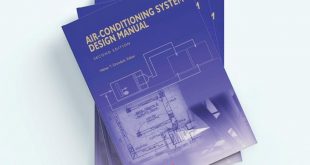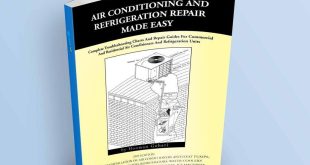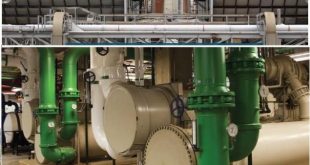HVAC Controls Operation and Maintenance: A Complete Guide
Understanding HVAC (Heating, Ventilation, and Air Conditioning) control systems is critical for ensuring efficient performance, energy savings, and occupant comfort in buildings. This guide explores the core aspects of HVAC controls, from basic functionality to advanced maintenance and troubleshooting techniques.

Basic Functions of HVAC Systems and Control Systems
HVAC systems are designed to regulate indoor climate by controlling temperature, humidity, and air quality. Control systems act as the brain of HVAC systems, using sensors and controllers to automate responses to changing environmental conditions. These systems ensure optimal comfort, reduce energy consumption, and maintain system health through automation and monitoring.
HVAC Equipment-to-Control Interactions
Efficient HVAC performance depends on seamless interaction between equipment and control mechanisms. Control systems manage components like chillers, boilers, air handling units, and variable air volume boxes by receiving data from sensors and adjusting outputs accordingly. Understanding these interactions helps technicians configure and optimize system operations.
Operating and Maintaining HVAC Control Systems
Regular operation and maintenance practices include sensor calibration, actuator inspections, and software updates. Maintenance technicians must be familiar with different types of controllers—electronic, pneumatic, or digital—to ensure that systems remain reliable and responsive.
The Mathematics of Control Systems: Controller Equations
Control systems rely on mathematical algorithms to maintain desired environmental conditions. Proportional, Integral, and Derivative (PID) control equations are commonly used. These equations help controllers calculate the appropriate response based on the difference between the setpoint and actual measurements.
Performance Prediction in HVAC Control Systems
Predictive analytics and simulation models are used to anticipate system performance under varying conditions. These tools assist in energy modeling, fault detection, and preventive maintenance planning. Accurate prediction helps reduce downtime and improve overall system efficiency.
HVAC Control System Set-Up
Setting up a control system involves hardware installation, software configuration, and network integration. It includes defining control logic, assigning setpoints, and ensuring communication between system components. A well-structured setup enables smooth operation and simplifies future troubleshooting.
Maintaining Electric and Electronic Control Systems
Electronic systems require regular maintenance such as circuit inspection, sensor recalibration, and firmware updates. Preventive maintenance reduces the likelihood of failures due to electrical surges, component degradation, or environmental stress.
Maintaining Pneumatic Control Systems
Pneumatic systems use compressed air to transmit control signals. Maintenance involves checking air supply quality, inspecting diaphragms and tubing, and ensuring pressure levels remain within operational limits. These systems, although older, remain effective in many commercial buildings.
Maintaining Local Loop to BAS Interfaces
The interface between local loop controllers and Building Automation Systems (BAS) must be carefully maintained. Technicians need to ensure signal compatibility, network integrity, and synchronized data exchange. Regular diagnostics help prevent communication errors and ensure seamless integration.
HVAC Control System Checkout Procedures
A thorough checkout is essential after system installation or major upgrades. This process includes verifying wiring, programming, signal flow, and equipment response. It ensures that all components are functioning as expected and that the system meets design specifications.
Fine Tuning Program for Pneumatic Control Systems
Fine-tuning improves responsiveness and accuracy in pneumatic systems. It involves adjusting feedback settings, optimizing control loop parameters, and synchronizing actuator responses. Proper tuning enhances performance and extends the life of system components.
Troubleshooting ATC Systems
Automatic Temperature Control (ATC) systems may encounter issues like sensor drift, valve sticking, or communication failures. Effective troubleshooting involves a systematic approach—starting from the sensor input to actuator output—to pinpoint and resolve issues promptly.
Tools & Fixtures for ATC System Operation and Maintenance
Technicians need specialized tools for maintaining ATC systems, such as manometers, multimeters, test kits, and calibration devices. Having the right fixtures improves diagnostic accuracy and reduces maintenance time.
Training Control System Operating and Maintenance Personnel
Proper training ensures that staff can operate, monitor, and maintain control systems effectively. Training programs should include system theory, hands-on practice, and scenario-based troubleshooting to build confidence and competence.
Installing Hybrid Pneumatic and Direct Digital Control Systems
Hybrid systems combine the reliability of pneumatics with the precision of digital controls. Installation involves integrating both technologies, ensuring compatibility, and managing the transition from legacy systems to modern BAS frameworks.
 Boilersinfo Boiler and Mechanical Power Digital Library
Boilersinfo Boiler and Mechanical Power Digital Library





